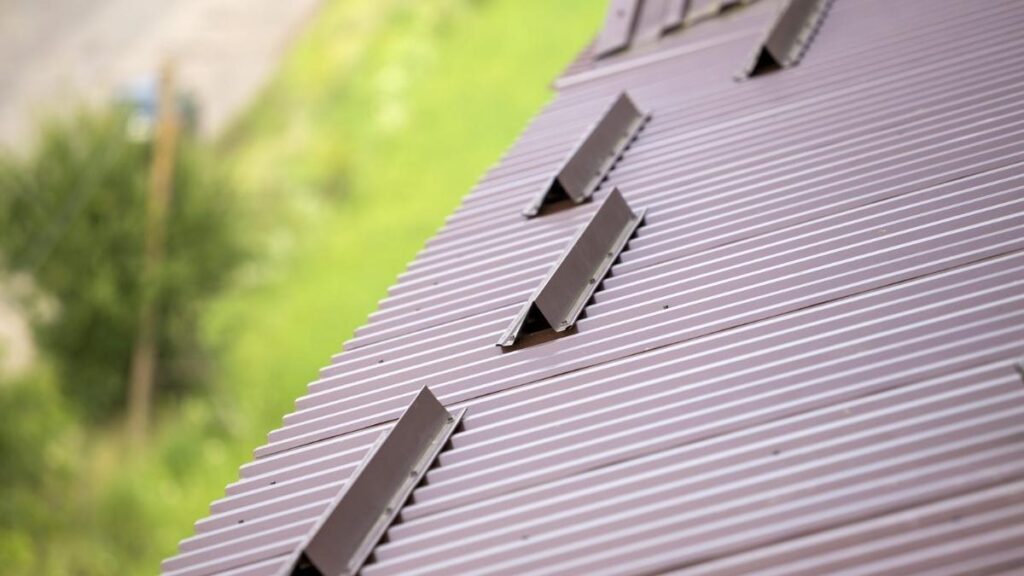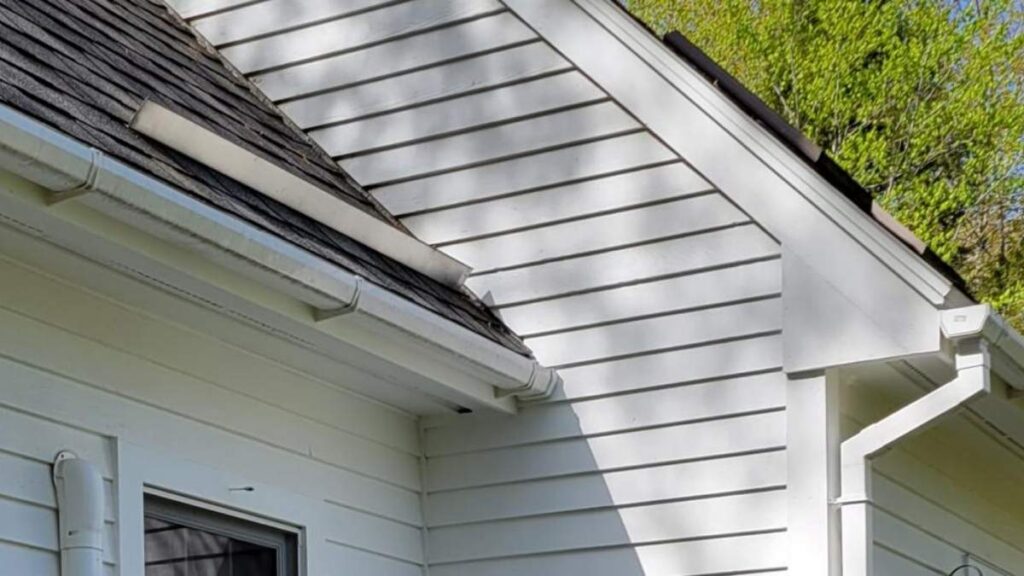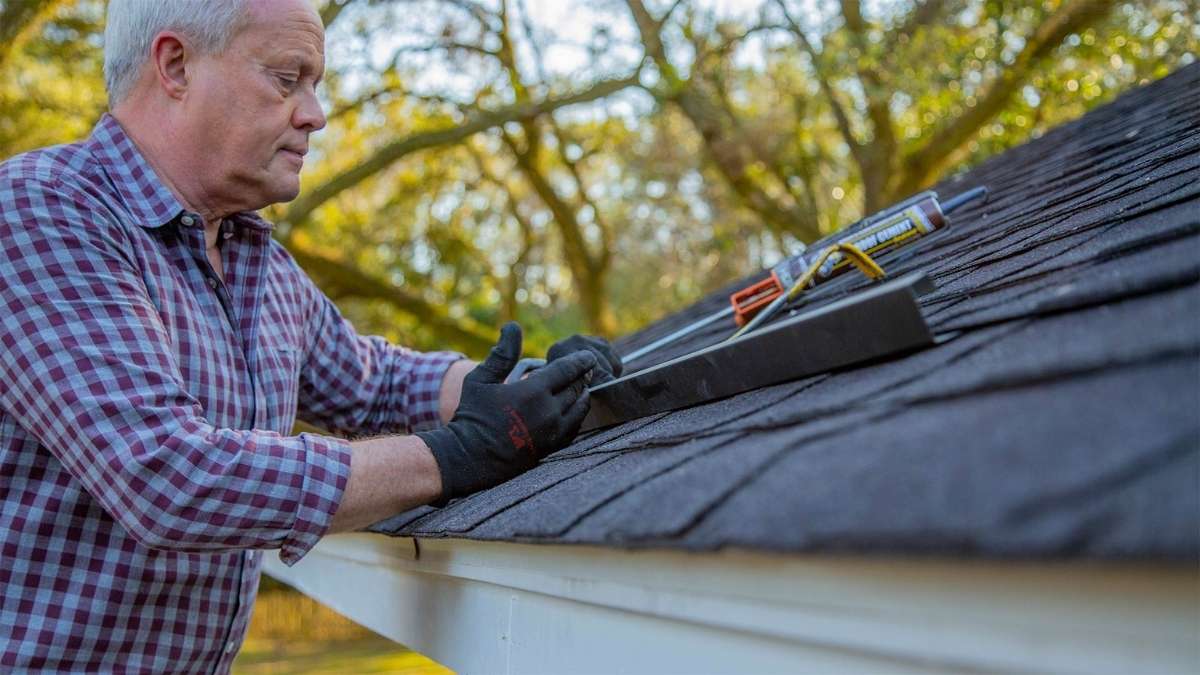A roof rain diverter serves as a simple yet powerful defense against water damage that many homeowners overlook. While some might view these devices as basic additions to their homes, a properly installed roof rain diverter can prevent thousands of dollars in potential structural repairs and maintenance costs.
In fact, these practical devices do more than just redirect water. A rain diverter keeps doorways dry, prevents mold growth, and protects vulnerable areas of the roof from water pooling. Additionally, the roof water diverter system is also remarkably accessible – homeowners can often install these protective elements themselves, though proper positioning is crucial for optimal performance.
This post explores the lesser-known advantages of these essential roofing components, from their structural benefits to their role in future-proofing homes against climate challenges.
What is a Modern Roof Rain Diverter?
Modern roof rain diverter have evolved significantly, incorporating advanced technology that sets them apart from traditional water management solutions. Also, today’s roof water diverter systems feature sophisticated filtration mechanisms that maximize water collection efficiency.
What sets new diverters apart
Contemporary roof rain diverter employ groundbreaking features that enhance their functionality. The patented Clean Shield™ technology deflects leaves and debris away from water flow, significantly improving collection rates. Furthermore, these systems include Smart Sense® technology, which automatically adjusts to divert the optimal amount of contaminated first-flush rainwater.
Notable features of modern diverters include:
- Single-screen filtration technology that maintains higher flow rates
- Compact inline first flush diversion capability
- 180-degree rotatable bodies for adaptable installation
- Multi-fit caps compatible with various downpipe sizes
Smart integration capabilities
Modern roof rain diverter systems now incorporate smart technology that actively responds to environmental conditions. These advanced systems use sensors to detect rainfall intensity, volume, and duration, enabling real-time adjustments to water management. Subsequently, integrated actuators modify the system’s configuration based on sensor inputs, optimizing water flow patterns.
The smart capabilities extend beyond basic water management. These systems connect through Wi-Fi or IoT protocols, enabling remote monitoring and control. Additionally, embedded sensors continuously track various parameters, including temperature changes, precipitation levels, and structural strain. Consequently, homeowners receive automated notifications when maintenance is needed or when specific thresholds are exceeded.
The integration of smart technology in roof rain diverter provides proactive management through advanced functions. Real-time condition monitoring enables early detection of potential issues, significantly reducing maintenance expenses over time. Moreover, these systems can work in harmony with other smart home features, creating a comprehensive approach to water management and home protection.
Hidden Structural Benefits
Proper water management through a roof rain diverter creates a robust defense system for your home’s structural integrity. Beyond basic water redirection, these systems provide critical protection for multiple structural components.
Foundation protection
A roof rain diverter primarily safeguards your home’s foundation by preventing water accumulation near crucial areas. When rainwater pools around the foundation, it creates pressure that leads to cracks and warping. Specifically, uncontrolled water can erode the soil surrounding the foundation, causing instability and potential sinking issues.
The installation of a roof water diverter ensures effective channeling of water away from these vulnerable areas, notably reducing:
- Foundation settlement risks
- Soil erosion around the structure
- Basement flooding potential
- Long-term structural deterioration
Preventing wall damage
A roof rain diverter essentially acts as a barrier against moisture infiltration into walls. Without proper diversion, water seeping behind siding leads to extensive damage of walls and insulation. The system works by sealing gaps and joints, essentially creating a first line of defense against water infiltration.
Extended roof life
The strategic placement of a roof rain diverter significantly extends shingle longevity. Water constantly running over specific roof areas accelerates wear and tear, potentially causing premature leaks. Furthermore, these systems prevent water from pooling in vulnerable spots, which could otherwise lead to ice dam formation during winter months.
The protective benefits extend beyond immediate water damage prevention. A properly installed roof rain diverter helps maintain the structural integrity of multiple building components simultaneously. By directing water away from critical areas, these systems prevent localized water damage and preserve both exterior and interior elements of the home. This comprehensive protection approach makes these systems an invaluable addition to any home’s water management strategy.

Energy Efficiency Advantages
The energy-saving potential of a roof rain diverter extends far beyond basic water management. According to the U.S. Department of Energy, proper roof cooling systems can reduce surface temperatures by up to 50°F, making these devices valuable contributors to home energy efficiency.
Temperature regulation impact
A roof rain diverter primarily influences temperature control by managing moisture levels around the home’s exterior. Proper moisture control prevents dampness in walls and foundations, which directly affects indoor temperature stability. Rather than allowing water to saturate building materials, the roof water diverter system maintains dry conditions that support optimal insulation performance.
Indeed, moisture accumulation forces HVAC systems to work harder to maintain comfortable temperatures. Accordingly, a rain diverter helps preserve the effectiveness of insulation by:
- Preventing moisture-induced temperature fluctuations
- Maintaining consistent indoor comfort levels
- Reducing basement cooling effects that impact upper floors
- Supporting proper attic ventilation
Reduced cooling costs
The financial benefits of a properly installed roof rain diverter become particularly evident in cooling costs. Studies show that effective water management systems can decrease annual air conditioning expenses by 15%. This reduction occurs because moisture-free walls and foundations require less energy to maintain desired temperatures.
Preventing Humidity-Related Cooling Challenges
When moisture accumulates around a home’s foundation, indoor humidity levels rise significantly. This increased humidity forces air conditioning systems to expend additional energy for temperature control. Nevertheless, homes equipped with proper rain diverter systems demonstrate better moisture management, resulting in more efficient HVAC operation.
Enhanced Cooling Efficiency During Summer
The cooling benefits become even more pronounced during the summer months. Undoubtedly, proper water management prevents the kind of structural dampness that can make cooling systems work overtime. By keeping walls and foundations dry, these systems help maintain optimal indoor temperatures without straining air conditioning units.
Year-Round Energy Efficiency Gains
The impact on energy efficiency extends throughout the seasons. Rather than dealing with fluctuating temperatures due to moisture buildup, homes with rain diverters maintain more stable indoor environments. This stability translates into consistent energy usage patterns and reduced strain on heating and cooling systems throughout the year.
Property Value Impact
Installing a roof rain diverter represents a strategic investment that yields substantial returns through multiple channels. Studies show that water-related emergencies affect 14,000 homeowners daily, with insurance companies paying approximately $13 billion annually for water damage claims.
ROI analysis
The return on investment for a roof rain diverter primarily stems from preventing costly water-related repairs. The average household water damage claim amounts to $12,514, making prevention through proper water management systems financially prudent. Also, professional appraisers highlight that properties lacking functional water management systems face significant value deductions.
Key financial benefits include:
- Prevention of foundation damage worth thousands in repairs
- Extended lifespan of roofing materials
- Reduced maintenance costs over time
- Enhanced curb appeal preservation
Home appraisers typically consider rain diverter systems as standard features in regions with substantial rainfall. Generally, properties without these systems face value deductions, as lenders often require functional water management systems before approving mortgages.
Insurance benefits
A roof water diverter installation can substantially impact insurance coverage and premiums. Homeowners insurance typically covers damage to diverters caused by specific perils, such as windstorms or lightning strikes. Overall, insurance providers recognize these systems as risk-mitigation tools.
Alternatively, insurance claims might be rejected if damage occurs from:
- Lack of proper maintenance
- Normal wear and tear
- Homeowner negligence
The presence of a well-maintained rain diverter system ultimately influences insurance considerations in several ways. Insurance providers may reduce premiums by up to 35% for homes with proper water management systems. Similarly, properties with comprehensive water protection measures demonstrate lower claim frequencies, potentially leading to more favorable coverage terms.
A properly installed roof rain diverter typically pays for itself through reduced maintenance costs and prevented damage. Based on comprehensive studies, the cost recovery period for water management systems averages approximately 2.4 years, making them financially advantageous investments for property owners.

Future-Proofing Your Home
Climate change presents unprecedented challenges for homeowners, making advanced water management systems increasingly crucial. A roof rain diverter stands at the forefront of climate-resilient home improvements, offering protection against extreme weather events that continue to intensify.
Climate change adaptation
As weather patterns shift, a roof water diverter becomes essential for managing unpredictable rainfall. Currently, about 1 in 4 people lack safely managed drinking water, highlighting the growing importance of efficient water collection systems. Throughout many regions, climate change disrupts traditional rainfall patterns, leading to water scarcity and contaminated water supplies.
A roof rain diverter primarily helps homeowners adapt by:
- Capturing and storing rainwater for future use
- Preventing water damage during intense storms
- Supporting sustainable water management practices
- Protecting against foundation flooding
The implementation of a rain diverter alongside other climate adaptation measures helps create a more resilient home environment. Research indicates that areas experiencing climate change effects see up to 35% more heavy rainfall events than in previous decades. This increase in precipitation intensity makes proper water management systems crucial for long-term home protection.
Smart home integration potential
Advanced roof rain diverter systems now incorporate cutting-edge technology that transforms traditional water management. These smart systems utilize sensors to monitor various parameters:
- Water flow rates and volume
- Temperature fluctuations
- Debris accumulation
- System performance metrics
Automated Adjustments for Efficient Water Management
The integration capabilities extend beyond basic monitoring. Smart roof rain diverter systems can automatically adjust their configuration based on weather conditions. Initially, these systems collect data about rainfall patterns and water usage, eventually creating customized water management strategies for each home.
Remote Monitoring and Real-Time Alerts
Alongside existing smart home features, modern rain diverter systems offer remote monitoring and control capabilities. Homeowners receive real-time alerts about system performance, maintenance needs, and potential issues. So, this proactive approach helps prevent water-related damage before it occurs.
Future Innovations in Smart Rain Diverters
The future of roof rain diverter technology looks promising, with ongoing developments in sensor technology and data analytics. Soon, these systems will offer enhanced predictive capabilities and self-diagnostic features, making them even more valuable for home protection. Additionally, the integration of heated elements in colder climates prevents ice formation, ensuring year-round functionality.
Advancements in Materials for Durability and Efficiency
The advancement in materials science continues to improve system durability and efficiency. Moreover, modern roof rain diverter systems utilize innovative materials that resist corrosion and withstand extreme weather conditions, ensuring long-term performance and reliability. This technological evolution makes these systems an essential component of future-ready homes.
Roof Rain Diverter Frequently Asked Questions
What are the main benefits of installing a roof rain diverter?
Roof rain diverter offer multiple benefits, including protection of your home’s foundation, prevention of wall damage, extended roof life, improved energy efficiency, and increased property value. They also help in adapting to climate change and can be integrated with smart home systems.
How do modern roof rain diverter differ from traditional ones?
Modern roof rain diverter incorporate advanced features like Clean Shield technology to deflect debris, Smart Sense® technology for optimal water diversion, and smart integration capabilities. Hence, they can connect to Wi-Fi, allow remote monitoring, and adjust automatically based on weather conditions.
Can roof rain diverter help reduce energy costs?
Yes, roof rain diverter can contribute to energy savings. By managing moisture levels and preventing dampness in walls and foundations, they help maintain stable indoor temperatures. Subsequently, this can lead to reduced cooling costs, with studies showing up to 15% decrease in annual air conditioning expenses.
How do roof rain diverter impact property value?
Installing a roof rain diverter can positively impact property value by preventing costly water-related repairs and extending the lifespan of roofing materials. They are often considered standard features by appraisers, and their absence may lead to value deductions. Additionally, they can lead to lower insurance premiums.
Are roof rain diverter effective in adapting to climate change?
Roof rain diverter are indeed effective in adapting to climate change. They help manage unpredictable rainfall patterns, prevent water damage during intense storms, and support sustainable water management practices. Moreover, with the increasing frequency of heavy rainfall events due to climate change, these systems are becoming crucial for long-term home protection.
